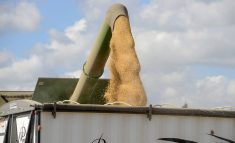Everyone who has celebrated Christmas has at least once received a gift where their first thought after unwrapping it was, “it’s not quite what I expected, but it’s the thought that counts, I guess.”
Three weeks before the big day, growers, traders and analysts may have received one of those gifts from Statistics Canada.
The data agency’s farmer-based principal field crop production report was set for release Dec. 4 (after the Dec. 7 issue of the Manitoba Co-operator went to print). Observers pegged the agency to place 2023-24 canola production somewhere between 18 million and 18.6 million tonnes, a substantial increase from the 17.4 million projected by StatCan in September, but below this year’s 18.7 million-tonne crop.
Read Also

When farmers vote against their interests
U.S president Donald Trump has left many clues over the years that many of his actions weren’t going to necessarily be in the best interests of American farmers.
Many in the agricultural sector have been and continue to be critical of StatCan’s methodology, ranging from when data is collected to its use of modelling and satellite imagery. But despite the ongoing question marks, consensus from the trade is that canola production figures, as well as those for wheat, were larger than earlier estimates. This will likely pressure canola futures, which have been trading sideways since September.
That is, unless diminishing Brazilian soybean prospects have their way.
Crop consultancy Patria Agronegocios released its latest projections for Brazil’s 2023-24 soybean crop on Nov. 30 and delivered a startling reality check.
With multiple agricultural firms indicating a record-breaking crop for 2023-24, Patria was the first dissenting voice, projecting 150.7 million tonnes, which is 3.4 million less than last year’s total. The decline is primarily due to dry weather in Brazil’s north and wet weather in the south. Earlier in the marketing year, projections exceeded 160 million tonnes.
While 150 million would still be considered a bumper crop in Brazil, the bullish outlook could still lift prices across the soy complex. This doesn’t take into account the rising demand for United States soybeans, especially from China, as well as biofuels. A record-breaking 190 million bushels of soybeans were crushed in the U.S. during October.
Soyoil on the Chicago Board of Trade is in a net short position, albeit a fraction of canola’s, and the January contract closed Nov. 29 below the 50-day moving average. More often than not, wherever soyoil goes, canola will follow.
StatCan’s latest figures could cause more than a few to scratch their heads and take them as they are. But looking around, there just may be something better underneath the tree.
















